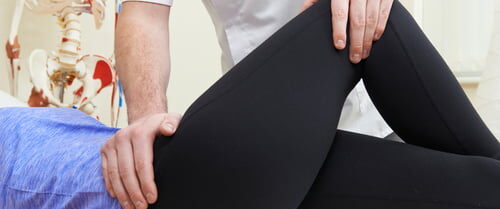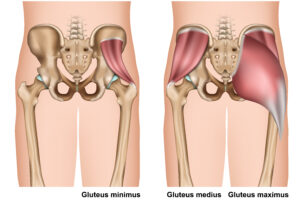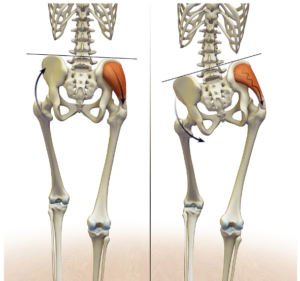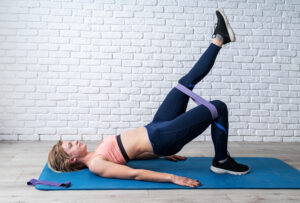Why does my hip hurt when I stand on one leg?

 Our expert osteopaths in Bath treat hip bursitis and thigh pain on a daily basis. One of the more common complaints that people describe is that they have pain on the outside of the hip/thigh when they focus more weight on the side where the hip pain occurs, commonly these would be activities such as going up or down stairs, getting out of the car, or running. So why would your hip hurt when you stand on one leg or when you place more weight on it and how would it cause hip bursitis?
Our expert osteopaths in Bath treat hip bursitis and thigh pain on a daily basis. One of the more common complaints that people describe is that they have pain on the outside of the hip/thigh when they focus more weight on the side where the hip pain occurs, commonly these would be activities such as going up or down stairs, getting out of the car, or running. So why would your hip hurt when you stand on one leg or when you place more weight on it and how would it cause hip bursitis?
The answer to this question lies in the biomechanics and muscular strength of the hip and thigh. When you lift one foot off the ground the pelvis on the same side wants to drop toward the ground so the body needs to respond to stop you from falling over. It does this by demanding support from two muscles on the outside of the standing leg called gluteus medius and gluteus minimus. These muscles are ‘abductors’, meaning they move the leg away from the body out to the side, but functionally in standing they contract to provide stabilisation stopping the hip from dropping to the unsupported side (1).
pelvis on the same side wants to drop toward the ground so the body needs to respond to stop you from falling over. It does this by demanding support from two muscles on the outside of the standing leg called gluteus medius and gluteus minimus. These muscles are ‘abductors’, meaning they move the leg away from the body out to the side, but functionally in standing they contract to provide stabilisation stopping the hip from dropping to the unsupported side (1).
 If you do not have the requisite strength in the abductors then you may have a slightly different way of walking on the weak side that involves a slight sideways movement of the pelvis, the name for this is a ‘Trendelenburg gait’ (2). If a person has some hip or thigh pain and demonstrates this way of walking it is a good indicator that the abductors are not strong enough to cope with the loads being asked of them which may be resulting in pain when the hip is loaded. A Trendelenburg gait or weakness in the abductors is implicated the development of several painful problems such as hip osteoarthritis, hip bursitis/greater trochanter pain syndrome, and patella tendinitis/tendinopathy as the lack of power changes how the hip, knee, and leg performs (3, 4). This video shows what an (exaggerated) Trendelenberg gait looks like.
If you do not have the requisite strength in the abductors then you may have a slightly different way of walking on the weak side that involves a slight sideways movement of the pelvis, the name for this is a ‘Trendelenburg gait’ (2). If a person has some hip or thigh pain and demonstrates this way of walking it is a good indicator that the abductors are not strong enough to cope with the loads being asked of them which may be resulting in pain when the hip is loaded. A Trendelenburg gait or weakness in the abductors is implicated the development of several painful problems such as hip osteoarthritis, hip bursitis/greater trochanter pain syndrome, and patella tendinitis/tendinopathy as the lack of power changes how the hip, knee, and leg performs (3, 4). This video shows what an (exaggerated) Trendelenberg gait looks like.
Luckily the way to address this is quite simple, you strengthen the abductors of the hip! There may be secondary muscles in and around the pelvis and trunk that need strengthening too, such as the obliques and abdominals that help support the hip and thigh, this would more commonly be the case with runners or other athletes that would need more power and control around the hip. The exercises are not complicated and can be performed at home, however, it is crucial to start with the most suitable for your level of fitness and then progressed over time to increase the strength over time until the muscles are strong enough to cope with each progessive load.
Do you suffer from hip or thigh pain when you run, climb stairs, or get out of the car? If so our expert osteopaths can help diagnose your pain and come up with a treatment plan to help get you pain-free and back to full fitness.
pain and come up with a treatment plan to help get you pain-free and back to full fitness.
Do you want to know what is causing your pain and if we can help? Why not take advantage of our new patient assessment introductory offer to get you started towards a tailor-made recovery plan for only £19.
Are you in a lot of pain and want to get better as soon as possible? If so then why not book a new patient consultation, with treatment on the day, for £75.
References
1 – Gandbhir VN, Lam JC, Rayi A. Trendelenburg Gait. [Updated 2022 Oct 6]. In: StatPearls [Internet]. Treasure Island (FL): StatPearls Publishing; 2022 Jan-. Available from: https://www.ncbi.nlm.nih.gov/books/NBK541094/.
2 – McGee SR. Evidence- based physical diagnosis . Elsevier, 2007. p51.
3 – Leetun DT, Ireland ML, Willson JD, Ballantyne BT, Davis IM. Core stability measures as risk factors for lower extremity injury in athletes. Med Sci Sports Exerc. 2004 Jun;36(6):926-34.
4 – Hewett TE, Myer GD, Ford KR, Heidt RS, Colosimo AJ, McLean SG, van den Bogert AJ, Paterno MV, Succop P. Biomechanical measures of neuromuscular control and valgus loading of the knee predict anterior cruciate ligament injury risk in female athletes: a prospective study. Am J Sports Med. 2005 Apr;33(4):492-501.
